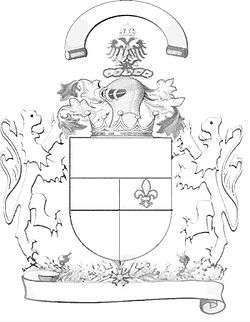
The coat of arms of Norway, with the royal crown displayed atop the
escutcheonA Crown is often an emblem of the sovereign state, a monarch's government, or items endorsed by it; see The Crown. Crowns may also be used by some republics.
A specific type of crown (or coronet for peerage in the British Isles) is employed in heraldry under strict rules. Indeed, some monarchies never had a physical crown, just a heraldic representation, as in the constitutional kingdom of Belgium.
Crowns are also often used as symbols of religious status or veneration, by divinities (or their representation such as a statue) or by their representatives, e.g. the Black Crown of the Karmapa Lama, sometimes used a model for wider use by devotees.
A crown can be a charge in a coat of arms, or set upon the shield to signify the status of its owner. So the royal crown which shows a Christian cross on a coat of arms means that his or her holder has power and direct protection from God; if you find crown of the Duke, the owner is not Duke necessarily rather someone who has received power and protection with its power.
Crowns bearing bird feathers refer to ancient beliefs, according to which the birds had divine qualities like angels communicated with the worlds beyond the sky.
In Italy there are rings that show the city walls used symbolically to remember the function that had the walls to protect the city.
Thus the crown is a symbol of power and protection received from someone or something or means that the owner of the crown you show guarantees you power and protection.
As a display of rank
If the bearer of a coat of arms has the title of baron or higher (or hereditary knight in some countries), he or she may display a coronet of rank above the shield, usually below the helm in British heraldry, often above the crest (if any) in Continental heraldry.
In this case the appearance of the crown follows a strict set of rules. A royal coat of arms may display a royal crown such as that of Norway. Princely coats of arms display a princely crown and so on right down to the mural crown which is commonly displayed on coats of arms of towns and some republics. Other republics may use a so-called people's crown or omit the use of crowns altogether. The heraldic forms of crowns are often inspired by the actual appearance of the respective country's royal and princely crowns.
Ships and other units of some navies have a naval crown above the shield of their coats of arms.
Commonwealth usage

The coat of arms of the
Barons Hawke displays a baronial coronet.
In formal English the word crown is reserved for the crown of a monarch whereas the word coronet is used for all other crowns, used by members of the Royal family and Peers.
In the peerage of the United Kingdom, the design of a coronet shows the rank of its owner, as in German, French and various other heraldic traditions. The coronet of a duke has eight strawberry leaves, that of a marquess has four strawberry leaves and four silver balls (known as "pearls", but not actually pearls), that of an earl has eight strawberry leaves and eight "pearls" raised on stalks, that of a viscount has sixteen "pearls", and that of a peerage baron or (in Scotland) lord of parliament has six "pearls". Between the 1930s and 2004, feudal barons in the baronage of Scotland were granted a chapeau or cap of maintenance as a rank insignia. This is placed between the shield and helmet in the same manner as a peers coronet. Since a person entitled to wear heraldic headgear customarily displays it in his coat of arms above the shield and below the helm and crest, this can provide a useful clue as to the owner of a given coat of arms.
Members of the British Royal Family have coronets on their coats of arms, and may wear them at coronations. They are according to regulations made by King Charles II in 1661 shortly after his return from exile in France (getting a taste for its lavish court style; Louis XIV started monumental work at Versailles that year) and Restoration, and vary depending upon the prince's relationship to the Monarch. Occasionally additional royal warrants vary the designs for individuals.
In Canadian heraldry, coronets are used to designate descent from United Empire Loyalists. A military coronet signifies ancestors who served in Loyalist regiments during the American Revolution, while a civil coronet is used by all others. The loyalist coronets are used only in heraldry, never worn.
.svg.png) King - St. Edward's Crown King - St. Edward's Crown |
.svg.png) King - Crown of Scotland King - Crown of Scotland |
.svg.png) King - Imperial/Tudor Crown King - Imperial/Tudor Crown |
.svg.png) Emperor - Imperial Crown of India Emperor - Imperial Crown of India |
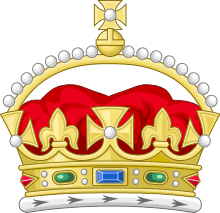 Heir Apparent Heir Apparent |
 Prince or Princess - brother, sister, son or daughter of a sovereign Prince or Princess - brother, sister, son or daughter of a sovereign |
 Prince or Princess - children of the Heir Apparent Prince or Princess - children of the Heir Apparent |
 Prince or Princess - children of other sons of the Sovereign. Prince or Princess - children of other sons of the Sovereign. |
 Other grandchildren of the Sovereign. Other grandchildren of the Sovereign. |
 Duke Duke |
 Marquess Marquess |
 Earl Earl |
 Viscount Viscount |
 Peerage Baron/Lord of Parliament (Scotland) Peerage Baron/Lord of Parliament (Scotland) |
 Feudal Baron (Scotland) Feudal Baron (Scotland) |
 Loyalists military coronet (Canadian) Loyalists military coronet (Canadian) |
 Loyalists civil coronet (Canadian) Loyalists civil coronet (Canadian) |
|
[1]
Continental usages
Precisely because there are many traditions and more variation within some of these, there are a plethora of continental coronet types. Indeed, there are also some coronets for positions that do not exist, or do not entitle use of a coronet, in the Commonwealth tradition.
Such a case in French heraldry of the ancien regime, where coronets of rank did not come into use before the 16th century, is the vidame, whose coronet (illustrated) is a metal circle mounted with three visible crosses. (No physical headgear of this type is known.)
Helmets are often substitutes for coronets, and some coronets are worn only on a helmet.
Andorra
Bulgaria
France
Napoleonic Empire
 Emperor Emperor
(1st Empire) |
 Emperor Emperor
(2nd Empire) |
 Sovereign Sovereign
Prince |
 Prince Prince |
 Duke Duke |
 Count Count |
 Baron Baron |
 Knight Knight |
 Bonnet Bonnet
d'honneur |
|
July Monarchy
Georgia
German-speaking countries
Holy Roman Empire
Liechtenstein
Austria
Austrian Empire
Germany
German Empire
Greece
 |
King |
Hungary
Italy
 Province Province |
 City City |
 Municipality Municipality |
Kingdom of Italy (1861-1946)
 King (crown of Savoy) King (crown of Savoy) |
 Crown Prince (principe ereditario) Crown Prince (principe ereditario) |
 Royal prince[lower-alpha 2] Royal prince[lower-alpha 2] |
 Prince of the blood Prince of the blood |
.svg.png) Duke Duke |
.svg.png) Marquess Marquess |
.svg.png) Count Count |
.svg.png) Viscount Viscount |
 Baron Baron |
 Noble Noble |
 Hereditary Knight Hereditary Knight |
 Patrician Patrician |
.svg.png) Province Province |
 City City |
 Municipality Municipality |
Kingdoms of Naples, Sicily, Two Sicilies
Grand Duchy of Tuscany
Other Italian states before 1861
Low Countries
Netherlands
 Emperor Emperor |
 King King |
 Prince Prince
(Members of the Royal House,
children of the Monarch) |
 Prince Prince
(Members of the Royal House,
grandchildren of the Monarch) |
 Prince Prince
(nobility, for titles granted after 1815) |
 Duke Duke |
 Marquess Marquess |
 Count Count |
 Count Count
(alternative style) |
 Viscount Viscount |
 Baron Baron |
 Hereditary Knight Hereditary Knight
(Erfridder) |
 Jonkheer Jonkheer |
Belgium
The older crowns are often still seen in the heraldry of older families.
.svg.png) King King
(and princes of
the royal family) |
.svg.png) Prince Prince
(nobility, for titles granted after 1815) |
 Prince Prince
(nobility, for titles granted during the ancien régime) |
 Duke Duke |
 Marquess Marquess |
.svg.png) Count Count |
.svg.png) Count (older) Count (older) |
.svg.png) Count (oldest) Count (oldest) |
 Viscount Viscount |
.svg.png) Baron Baron |
 Baron (older) Baron (older) |
 Hereditary Knight Hereditary Knight
(Chevalier/Erfridder) |
Luxembourg
 |
Grand Duke |
|
Monaco
 |
Prince |
|
Poland and Lithuania
 King (New) King (New) |
 King (Older) King (Older) |
 Prince Prince |
 Nobleman Nobleman |
|
Portuguese-speaking countries
Portugal
Kingdom of Portugal (until 1910)
 King King |
 Crown Prince Crown Prince |
 Prince of Beira Prince of Beira |
 Infante Infante |
 Duke Duke |
 Marquess Marquess |
 Count Count |
 Viscount Viscount |
 Baron Baron |
Brazil
Empire of Brazil
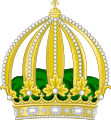 Emperor Emperor |
 Prince Imperial Prince Imperial |
 Prince Prince |
 Duke Duke |
 Marquess Marquess |
 Count Count |
 Viscount Viscount |
 Baron Baron |
Romania
 |
 |
 |
 |
| Capital |
City |
Town |
Village |
Russia
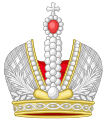 Emperor Emperor |
 crown of the grand duchy of Finland crown of the grand duchy of Finland |
 Monomakh Crown Monomakh Crown |
 Prince Prince |
.svg.png) Count Count |
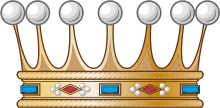 Baron Baron |
 Baron (alternative style) Baron (alternative style) |
 Crown of Nobility Crown of Nobility |
|
Nordic countries
Denmark
 King King |
 Crown Prince Crown Prince |
 Prince Prince
(royal family) |
 Duke Duke |
 Marquess Marquess |
 Count Count |
 Baron Baron |
 Crown of Nobility Crown of Nobility |
Finland
During the Swedish reign, Swedish coronets were used. Crowns were used in the coats of arms of the historical provinces of Finland. For Finland Proper, Satakunta, Tavastia and Karelia, it was a ducal coronet, for others, a comital coronet. In 1917 with independence, the coat of arms of Finland was introduced with a Grand Ducal coronet, but it was soon removed, in 1920. Today, some cities use coronets, e.g. Pori has a mural crown and Vaasa a Crown of Nobility.
Norway
 Heraldic crown of the King Heraldic crown of the King |
 Physical crown of the King Physical crown of the King |
 Physical crown of the Queen Physical crown of the Queen |
 Crown Prince Crown Prince |
 Duke Duke |
 Marquess Marquess |
 Count Count |
 Baron Baron |
 Crown of Nobility Crown of Nobility |
|
Sweden
 King King |
 Crown Prince Crown Prince |
 Duke Duke |
 Count Count |
 Baron Baron |
 Crown of Nobility Crown of Nobility |
Serbia
 |
King of Yugoslavia |
|
Spanish-speaking countries
Spain
Mexico
Non-European usages
Egypt before 1953
Siam and Thailand
Other examples
[2]
Catholic Church
Multinational
As a charge
In heraldry, a charge is an image occupying the field of a coat of arms. Many coats of arms incorporate crowns as charges. One notable example of this lies in the Three Crowns of the arms of Sweden.
Additionally, many animal charges (frequently lions) and sometimes human heads also appear crowned. Animal charges gorged (collared) of an open coronet also occur, though far less frequently.
See also
Notes
- 1 2 3 4 5 6 This standard has many exceptions.
- ↑ The dukes of Genoa were granted the privilege to use a crown of royal prince though they were only princes of the blood
References
Crowns |
|---|
|
English, Scottish,
Welsh, British
(chronological) | |
|---|
|
| Austria | |
|---|
|
| Balkans | |
|---|
|
| Bohemia | |
|---|
|
| France | |
|---|
|
| Germany | |
|---|
|
| Holy Roman Empire |
- Reliquary Crown of Otto II
- Crown of Otto III
- Reliquary Crown of Empress Cunigunde
- Salian Funeral Crowns of Spires
- Kamelaukion of Frederick II or Constance of Sicily
- Reliquary Crown of Charlemagne (14th century)
|
|---|
|
| Holy See | |
|---|
|
| Hungary | |
|---|
|
| Iberia | |
|---|
|
| Iran | |
|---|
|
| Italy | |
|---|
|
| Poland | |
|---|
|
| Russia |
- "Cap of Monomakh"
- Crown of Kazan Tzardom
- Crown of Tsar Michael Fyodorovich
- Cap of Monomakh of the second set
- Diamond crown of Tsar Peter I
- Diamond crown of Tsar Ivan V
- Altabas crown of the third set
- Crown of Empress Catherine I
- Crown of Empress Anna Ivanovna
- Great Imperial Crown
- Maltese Crown
- Small Imperial Crown
|
|---|
|
| Scandinavia | |
|---|
|
| Other European | |
|---|
|
| Africa | |
|---|
|
| Americas | |
|---|
|
| Asia | |
|---|
|
| See also | |
|---|


.svg.png) King - St. Edward's Crown
King - St. Edward's Crown.svg.png) King - Crown of Scotland
King - Crown of Scotland.svg.png) King - Imperial/Tudor Crown
King - Imperial/Tudor Crown.svg.png) Emperor - Imperial Crown of India
Emperor - Imperial Crown of India  Heir Apparent
Heir Apparent Prince or Princess - brother, sister, son or daughter of a sovereign
Prince or Princess - brother, sister, son or daughter of a sovereign Prince or Princess - children of the Heir Apparent
Prince or Princess - children of the Heir Apparent Prince or Princess - children of other sons of the Sovereign.
Prince or Princess - children of other sons of the Sovereign. Other grandchildren of the Sovereign.
Other grandchildren of the Sovereign. Duke
Duke Marquess
Marquess Earl
Earl Viscount
Viscount Peerage Baron/Lord of Parliament (Scotland)
Peerage Baron/Lord of Parliament (Scotland)

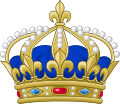 King (after the 1500s)
King (after the 1500s).svg.png) Dauphin of France
Dauphin of France Emperor
Emperor Emperor
Emperor Sovereign
Sovereign Prince
Prince Duke
Duke Count
Count Baron
Baron Knight
Knight

.svg.png) Older Imperial Crown
Older Imperial Crown .svg.png) Newer Imperial Crown
Newer Imperial Crown .svg.png) Older Crown of the King of the Romans
Older Crown of the King of the Romans.svg.png) Newer Crown of the King of the Romans
Newer Crown of the King of the Romans  Crown of
the King of Bohemia
Crown of
the King of Bohemia Archducal hat
Archducal hat Oldest Electoral hat
Oldest Electoral hat Older Electoral hat
Older Electoral hat New Electoral hat & new Ducal hat
New Electoral hat & new Ducal hat Ducal hat of Styria
Ducal hat of Styria Ducal crown
Ducal crown Princely hat
Princely hat Princely crown
Princely crown Crown of a Landgraf
Crown of a Landgraf Crown of an heir to a duchy
Crown of an heir to a duchy
.svg.png) Mural crown of the coat of arms of Austria
Mural crown of the coat of arms of Austria .svg.png) Emperor
Emperor King of Bohemia
King of Bohemia Archducal crown (New)
Archducal crown (New)  Archducal hat (Older)
Archducal hat (Older) Ducal hat of Styria
Ducal hat of Styria New Ducal hat
New Ducal hat Prince
Prince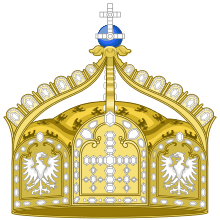 German State Crown
German State Crown Empress
Empress Crown Prince
Crown Prince King of Prussia
King of Prussia King of Bavaria
King of Bavaria King of Württemberg
King of Württemberg

 King (crown of Savoy)
King (crown of Savoy) Crown Prince (principe ereditario)
Crown Prince (principe ereditario) Royal prince[lower-alpha 2]
Royal prince[lower-alpha 2] Prince of the blood
Prince of the blood King of Naples
King of Naples  Heir to the throne (Duke of Calabria)
Heir to the throne (Duke of Calabria) Prince and princess
Prince and princess Crown of San Marino
Crown of San Marino Crown of Napoleonic Italy
Crown of Napoleonic Italy Papal Tiara
Papal Tiara Doge of Venice
Doge of Venice Doge of Genoa
Doge of Genoa Emperor
Emperor King
King Prince
Prince Prince
Prince Prince
Prince Duke
Duke.svg.png) King
King.svg.png) Prince
Prince  Prince
Prince  Duke
Duke.svg.png) Count (oldest)
Count (oldest) Viscount
Viscount Baron (older)
Baron (older)

 King (New)
King (New) King (Older)
King (Older) Prince
Prince King
King Crown Prince
Crown Prince  Prince of Beira
Prince of Beira  Infante
Infante Emperor
Emperor Prince Imperial
Prince Imperial Prince
Prince




 Emperor
Emperor crown of the grand duchy of Finland
crown of the grand duchy of Finland Monomakh Crown
Monomakh Crown Prince
Prince King
King Crown Prince
Crown Prince Prince
Prince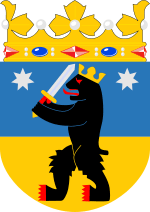

 Heraldic crown of the King
Heraldic crown of the King Physical crown of the King
Physical crown of the King Physical crown of the Queen
Physical crown of the Queen King
King Count
Count Baron
Baron Crown of Nobility
Crown of Nobility
 King National arms design
King National arms design.svg.png) King Monarch's arms design
King Monarch's arms design King (Aragon, Catalonia, Balearics, Valencia)
King (Aragon, Catalonia, Balearics, Valencia) Crown Prince
Crown Prince Crown Prince (Aragon, Catalonia, Balearics, Valencia)
Crown Prince (Aragon, Catalonia, Balearics, Valencia) Infante
Infante Infante (Aragon, Catalonia, Balearics, Valencia)
Infante (Aragon, Catalonia, Balearics, Valencia) Grandee of Spain
Grandee of Spain.svg.png)
.svg.png)


.svg.png)

 Imperial Crown of Ethiopia
Imperial Crown of Ethiopia Royal Crown of Hawaii
Royal Crown of Hawaii.svg.png) Crown of the Shah of Persia
Crown of the Shah of Persia.svg.png) Crown of the Shah of Iran
Crown of the Shah of Iran Royal Crown of Tahiti
Royal Crown of Tahiti Royal Crown of Tonga
Royal Crown of Tonga


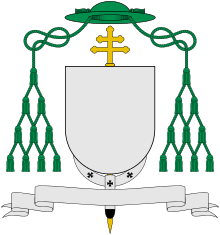

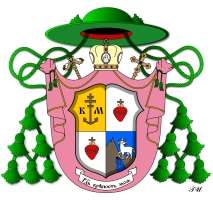 Eastern Catholic prelate, combining elements of both Eastern and Western ecclesiastical heraldry
Eastern Catholic prelate, combining elements of both Eastern and Western ecclesiastical heraldry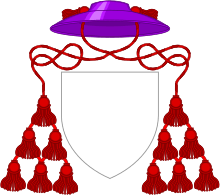 Apostolic protonotary (Monsignor)
Apostolic protonotary (Monsignor)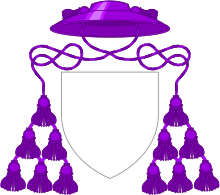 Honorary Prelate (Monsignor)
Honorary Prelate (Monsignor) Chaplain of His Holiness (Monsignor)
Chaplain of His Holiness (Monsignor)


 Celestial crown
Celestial crown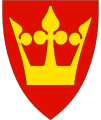
 A crowned lion head in the arms of Kreis Biedenkopf, a county in Hesse, Germany (1832-1974)
A crowned lion head in the arms of Kreis Biedenkopf, a county in Hesse, Germany (1832-1974) The Three Crowns, as well as lions and leopards crowned, in the arms of Eric of Pomerania
The Three Crowns, as well as lions and leopards crowned, in the arms of Eric of Pomerania Badge of the Unicorn Pursuivant, a unicorn gorged of a coronet
Badge of the Unicorn Pursuivant, a unicorn gorged of a coronet